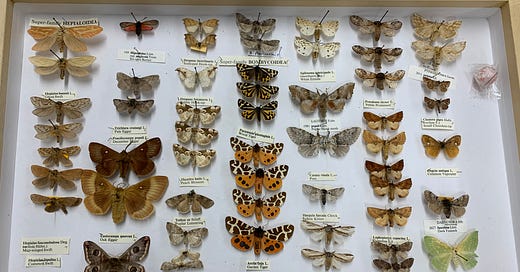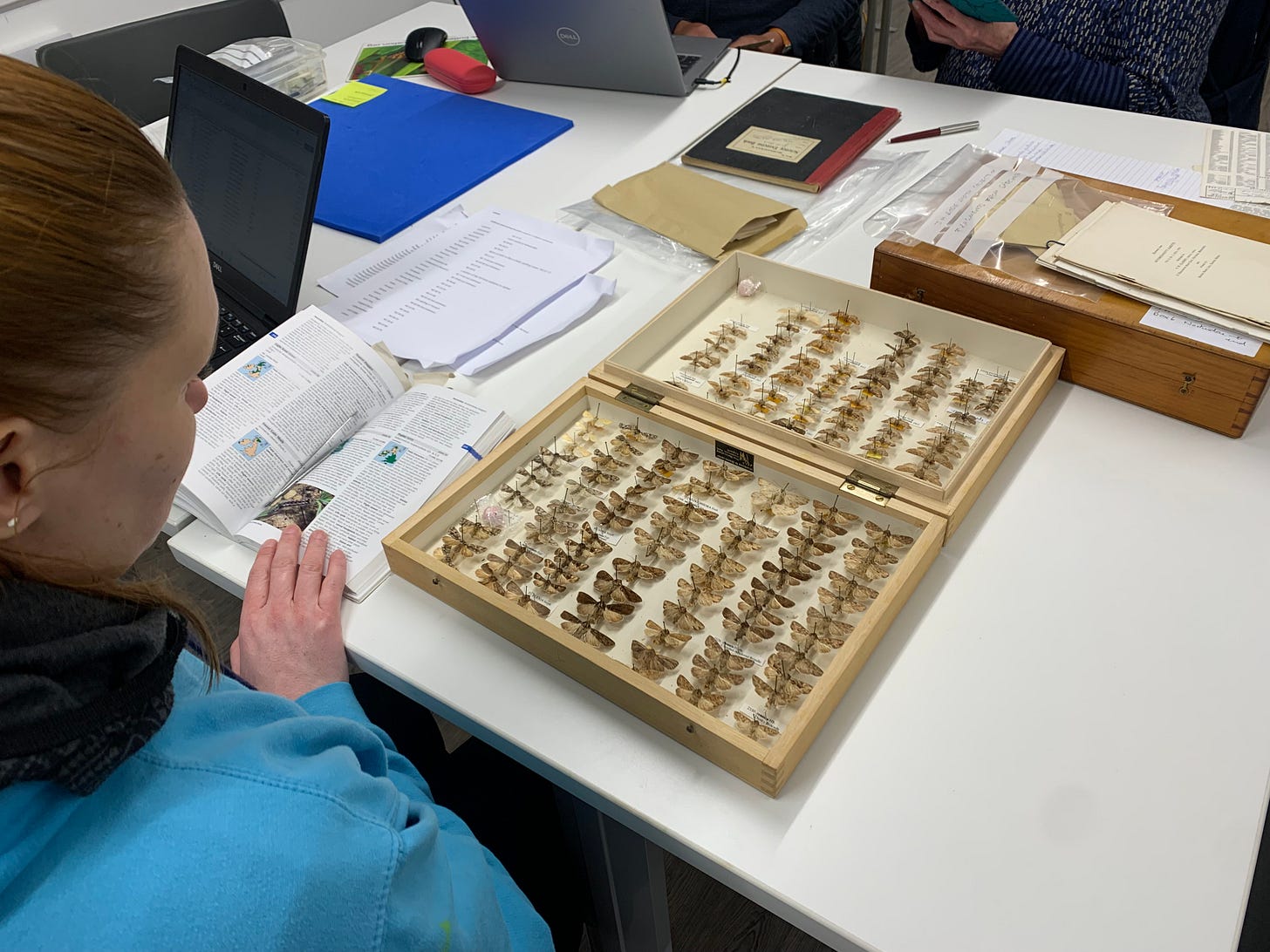Digitising the Fascinating Rosie Moth Collection
Guest Blog from Tracy Munro, East Coast Species on the Edge Project Officer
Did you know there was a moth enthusiast in Caithness in the 1950s, 60s and 70s who amassed a collection of over 900 specimens?!
When I first heard this, I thought “Woah that’s amazing”, the patience and dedication required to amass such a collection is remarkable. It was an honour to be asked to organise a team of volunteers to digitalise the collection. This task involves the turning of specimens with data labels into accurate biological records.
J H Rosie was a biology teacher at Wick High School whose collections and diaries led to the only published account of a full Caithness list of larger moths. Rosie was at the time in frequent contact with Ian R Lorimer, who wrote the definitive list of Orkney’s moths, they enjoyed comparing notes about the moths of the far north of Scotland. Rosie’s lists are the essential basis for what is known of Caithness’s moths.
Originally a volunteer from Caithness started the digitisation process but due to ill health was unable to continue and so the task fell to us, he did a sterling job laying the groundwork for us. The Rosie collection belongs to the Inverness Museum and Art Gallery where the collection can be viewed on request.
Inverness Museum kindly hosted us for the day and a band of trusty moth enthusiasts, including High Life Highland Countryside Ranger Marcia O’Hara, gathered to begin the onerous but exciting task of digitalising the collection. Dr. Mark Young, Aberdeen University, had previously checked the identification of the moths as well as re-pinning some of the fragile specimens.
The digitalisation process allows for identification checks as well as the chance to stumble upon forgotten histories behind some specimens and rediscover any rarities.
“amongst the collection are some exciting species, such as the Lunar Yellow Underwing, and some that used to be more common but are now very scarce, and so he provides a snapshot in time, against which the modern situation can be gauged. You will also see that he includes some 'northern' forms, such as the melanistic Oak Eggar and the northern 'edda' form of the Autumnal Rustic. These are characteristic of forms found more often on Orkney or Shetland”. - Dr Mark Young
The avid moth-er also kept diaries where key data relating to weather and how the moths were trapped, sugar or sweeping for example, are recorded.
The Rosie collection covers a period in time when land use changes and humans have had a major impact on biodiversity. For many of our moth species distributional information is lacking or poorly documented, for others, observations and collections such as Rosie’s can fill in important data gaps and be of significant biological value.
Many thanks once again to all the volunteers who turned up to help with this important task.
“these butterfly and moth specimens will be here for future generations to marvel at and wonder why so many have been lost, perhaps encouraging others into a life dedicated to these wonderful insects” Dr. Tom Prescott, Head of Conservation Scotland
Tracy Munro is East Coast Species on the Edge Project Officer Species on the Edge is a partnership project of eight organisations, funded by the National Lottery Heritage Fund. The partnership consists of Amphibian and Reptile Conservation, The Bat Conservation Trust, Buglife, Bumblebee Conservation Trust, Butterfly Conservation, NatureScot, Plantlife and RSPB Scotland”
Misunderstood Moths
Ask most folk what they think about moths and the answers are pretty standard: “They are brown and drab” “They only fly at night” “They eat your clothes” It doesn’t take long to discover that the answer to all these points is “not always!” Moths are closely related to butterflies and both belong to the order Lepidoptera. In the UK, we have …









